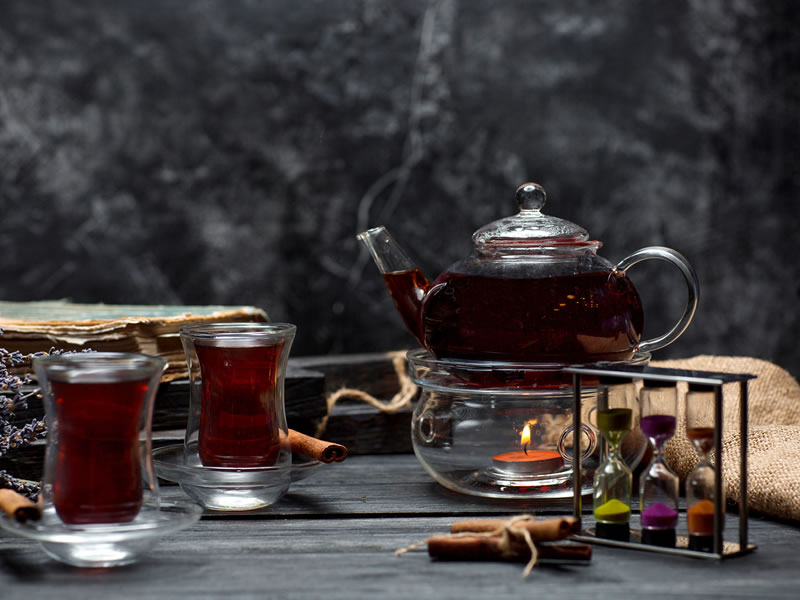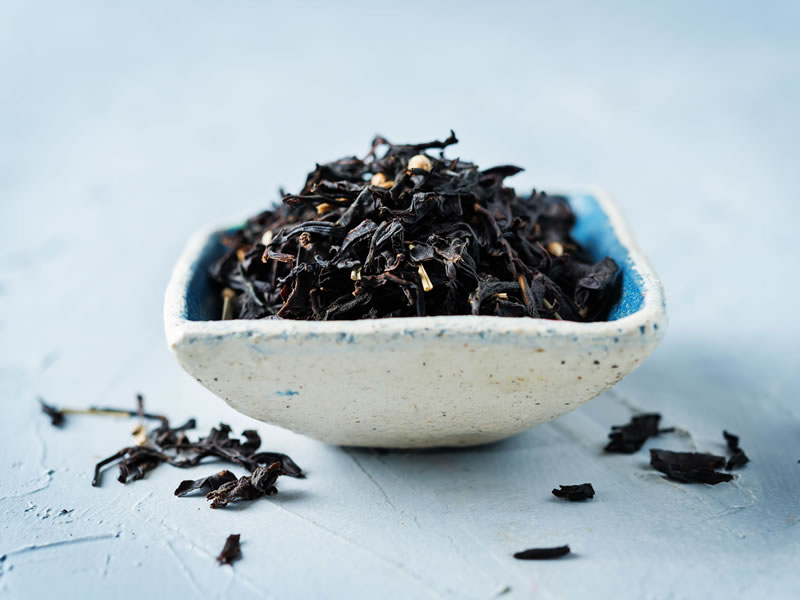Black Tea
Black Tea is one of four main types of tea. It accounts for over 90% of all tea sold in the west, and unlike green tea which loses its flavour within a year, black tea retains its flavour for several years. Black tea is more oxidized than Oolong, green and white tea and is generally the strongest type of tea. Black tea without added sweeteners or additives contains minimal quantities of calories, protein, sodium and fat. A study carried out at Boston University in 2006 concluded that drinking black tea over a short or long period of time reverses endothelial vasomotor dysfunction in patients with coronary artery disease. This discovery may partly explain the link between black tea intake and decreased cardiovascular disease.
The manufacture of black tea
The process of making black tea begins after the harvest with the leaves being withered by blowing air on them. There are then two ways in which black tea can be processed, either CTC (crush, tear, curl) or the orthodox way.
The CTC method produces grades that are commonly used in tea bags and the orthodox method, which can sometimes be processed by hand is used for higher quality teas. While the methods employed in orthodox processing differ by tea type, this style of processing results in the high quality loose tea sought by tea connoisseurs.
Orthodox black tea manufacture
The withered tea leaves are heavily rolled either by hand or mechanically through the use of a cylindrical rolling table or a rotovane. The rolling table consists of a ridged table-top moving in an eccentric manner to a large hopper of tea leaves, of which the leaves are pressed down onto the table-top. The process produces a mixture of whole and broken leaves, and particles which are then sorted, oxidized, and dried.
The rotorvane (rotovane), created by Ian McTear in 1957 can be used to replicate the orthodox process. The rotovane consisted on an auger pushing withered tea leaves through a vane cylinder which crushes and evenly cuts the leaves, however the process is more recently superseded by the boruah continuous roller, which consists of a oscillating conical roller around the inside a ridged cylinder. The rotorvane can consistently duplicate broken orthodox processed black tea of even sized broken leaves, however it cannot produce whole leaf black tea. The broken leaves and particles from the orthodox method can feed into the CTC method for further processing into fanning or dust grade teas.
Cut, tear, curl manufacture of black tea
CTC: “Cut, tear, curl” or “Crush, tear, curl” black teas is a production method developed by William McKercher in 1930. It is considered by some as a significantly improved method of producing black tea to the orthodox through the mincing of wither tea leaves. The use of a rotovane to precut the withered tea is a common preprocessing method prior to feeding into the CTC machines. These machines then further shred the leaves from the rotavane by processing them through several series of contra-rotation rotors with surfaces patterning that cut and tear the leaves to very fine particles.
The next process takes place under strictly controlled temperature and humidity and is called oxidation. Sometimes this processes is also referred to as fermentation, which is a misnomer since no actual fermentation takes place. The level of oxidation determines the quality of the tea. This can be done on the floor in batches or on a conveyor bed with air flow for proper oxidation and temperature control.
Since oxidation begins at the rolling stage itself, the time between these stages is also a crucial factor in the quality of the tea however fast processing of the tea leaves through continuous methods can effectively make this a separate step. The leaves are then dried to arrest the oxidation process and sorted into grades according to their sizes, usually with the use of sieves. The tea is sometimes sub-graded according to other criteria before finally being packaged.
Tea grading
There are usually 4 different quality grades of black tea, whole leaf, brokens, fannings and dust. Whole leaf teas, especially if they contain the tips are considered to be the highest quality and most valuable. This results in a coarser textured tea than that of tea bags. Whole leaf teas will often then be subgraded into the following categories:
- Tippy (T) – tea which has many tips (the newly budding leaf)
- Flowery (F) – tea which has the fine young leaves with a certain proportion of tips
- Golden Flowery (GF) – tea which contains young tips and/or buds from early in the season
- Finest (F) – Top grade production
- Special Finest (SF) – Highest grade production
- Pekoe (P) – Pekoe (pronounced peh-ko) is an unbroken leaf shorter than Orange Pekoe
- Orange Pekoe (OP) – Orange Pekoe is an unbroken leaf between 8 and 15 cm in length which is rolled lengthways
- Pekoe Souchong (PS) – Shorter than Pekoe and more coarse
- Souchong (S) – Large leaves which are rolled lengthwise
Broken leaves are usually sold as medium grade loose teas but smaller broken leaves will sometimes be included with fannings or dust in bagged teas. Fannings are usually what’s left after the production of larger and better quality tea varieties, they are used alongside dust in the production of tea bags. Fannings and dust are perfect for making tea bags, because of the greater surface area, the fannings and dust allow a quick, complete diffusion producing a richer flavoured tea in minutes.



